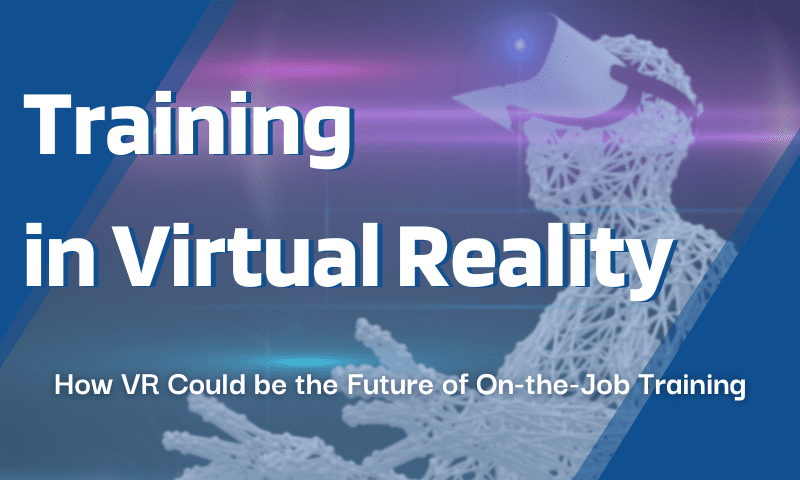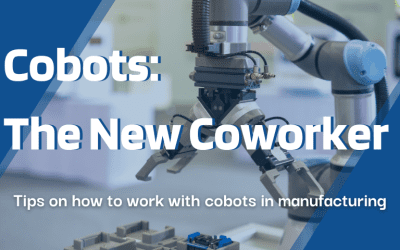Virtual reality is becoming increasingly popular in the manufacturing training as it is a cost-effective way to train employees. VR allows workers to gain hands-on experience in a safe and controlled environment. This benefits dangerous or delicate tasks that would otherwise be difficult to train for. Additionally, VR helps new employees learn the layout of a factory floor before they ever set foot in the real thing. With so many benefits, it’s no wonder that VR is becoming more commonplace in factories worldwide. While it may seem a little strange, using VR greatly benefits employees.
VR training is revolutionizing how businesses outsource and employees gain industry knowledge. By utilizing immersive Virtual Reality environments, organizations effectively train and educate their staff without the costs associated with attending physical locations for course materials. In addition to the cost savings, VR training gives businesses the flexibility they need in order to build up their employee workforce quickly and efficiently.
Employees subsequently benefit from the improved educational quality offered by VR. It provides greater safety and efficacy when working on projects or tasks by allowing employees to practice without having the risk of messing up and causing harm. It’s clear that Virtual Reality is transforming how training is designed and delivered, ultimately leading to better outcomes for businesses and employees.
How does VR training work, and what advantages does it offer over traditional methods like textbooks or in-person lectures?
VR training utilizes simulations and virtual environments, which allow new trainees to safely practice how to operate and maintain equipment, identify warning signs or hazards, and troubleshoot any issues that arise. VR utilizes computer screens or sometimes even headsets designed to immerse.
This type of immersive learning is a major advantage over traditional methods of instruction like textbooks or lectures, where it can be difficult to understand how all the individual elements work together. By providing more comprehensive instruction that can span multiple scenarios and be tailored for specific situations, VR training offers huge potential for effective and efficient learning outcomes.
Some examples of businesses that are already using VR training are to great effect.
Virtual Reality is becoming increasingly popular across many industries. Walmart and Bank of America have started using VR to provide customer service training that immerses employees in scenarios they would encounter on the job, while MGM has pilots learning in a simulated real-world environment without putting them or their aircraft at risk. In addition, Albertsons, FedEx, JetBlue, GE, Sprouts, and Veri all have similar VR training programs for various purposes such as safety protocols or even elevating the customer experience.
With endless applications for both enterprise and consumer use cases, it’s no surprise that businesses are finding huge success with immersive VR learning environments.
The potential disadvantages of VR training and how to avoid them.
Virtual reality manufacturing training can be an incredibly effective way to train workers. It can simulate different scenarios in a virtual space and provide employees with the opportunity to gain real-world skills without the risk of any actual dangers. However, virtual reality training also comes with its own risks, such as potentially reducing job satisfaction due to limited human contact and difficulty in communication with virtual agents.
To avoid these potential detriments, employers need to ensure virtual classroom sessions engage with opportunities for interactions between virtual agents and learners while also creating chances for off-the-grid conversations. Additionally, it is important that companies don’t entirely rely on virtual systems to provide education or instruction – there should always be trained professionals on hand who can offer personal interaction when needed. All of these preventative measures will go a long way in making virtual reality training a success for workers and employers alike.
The future of VR training – where it’s going and what we can expect from it in the years to come.
Virtual reality training has been steadily growing as a preferred method for many industries, such as manufacturing and healthcare, due to its potential to dramatically improve efficiency and safety. However, when looking at the future of VR training, we see that the possibilities are endless – beyond what is currently possible.
Companies will be able to leverage vr simulations to create more realistic learning environments, develop custom scenarios ideal for their individual businesses and even reduce the overall cost of training. Additionally, vr will make it easier than ever before to access user analytics that inform how learners measure up against predetermined benchmarks. As vr technology advances over the years, it seems like vr training may revolutionize how companies approach employee development in both large and small ways.
VR training is a versatile and powerful tool that offers many advantages over traditional learning methods. It can be used to train employees in a wide variety of industries and can potentially revolutionize the way we learn. If you’re looking to get ahead of the curve, it’s worth considering investing in VR training for your business. Thanks for reading!



-400x250.png)
-400x250.png)